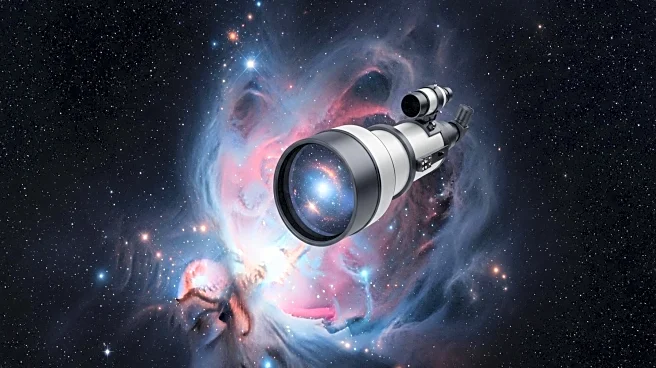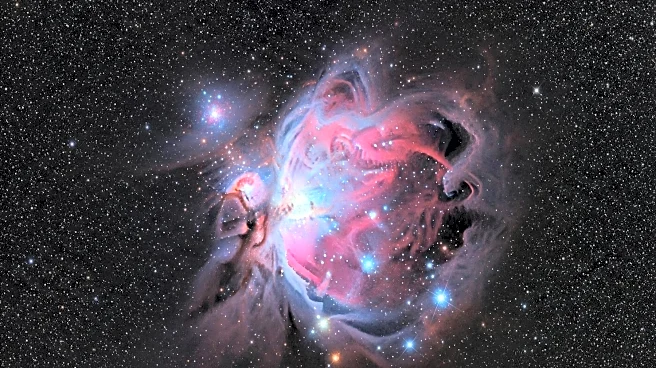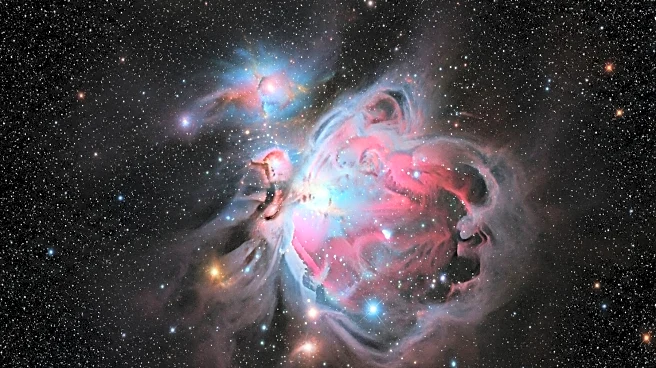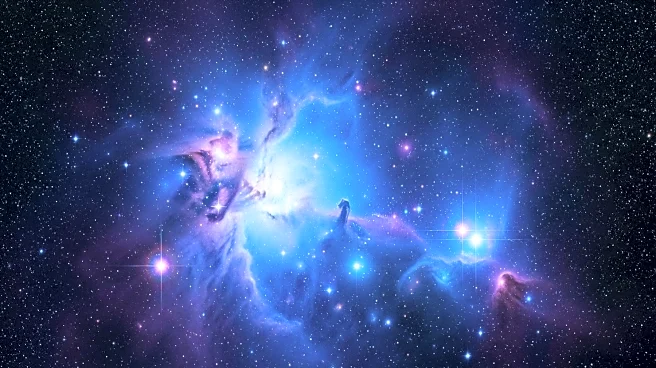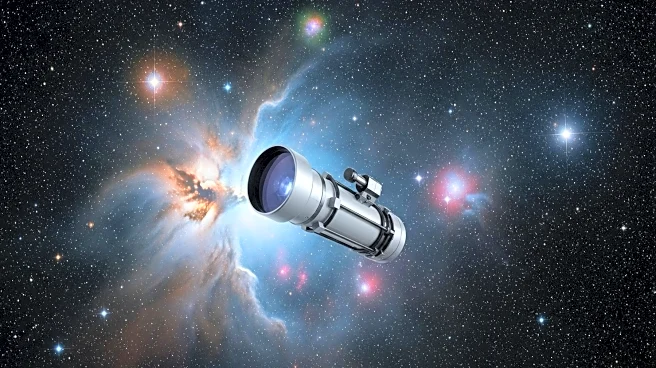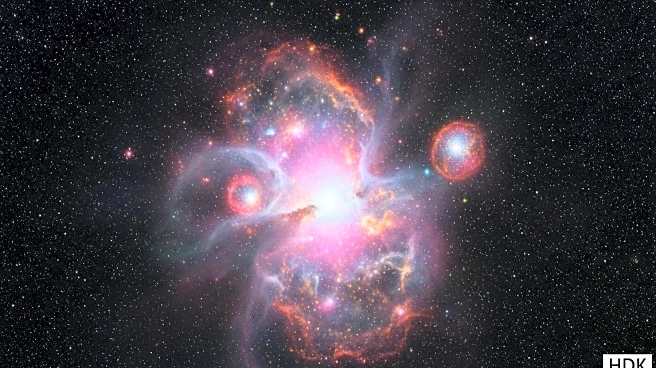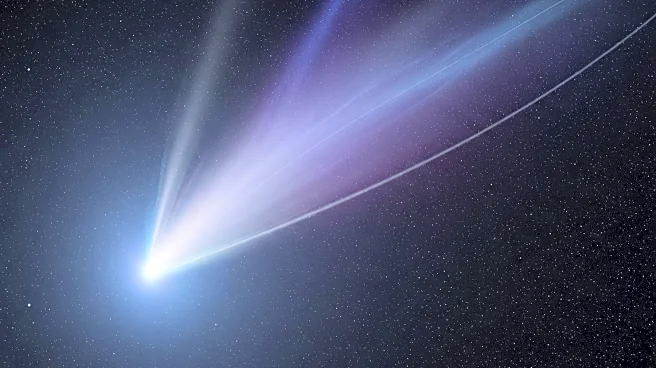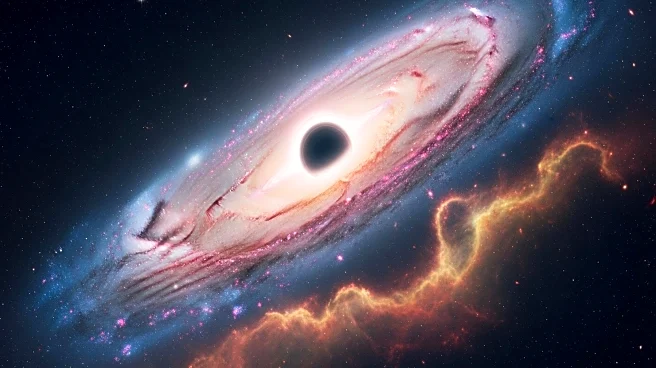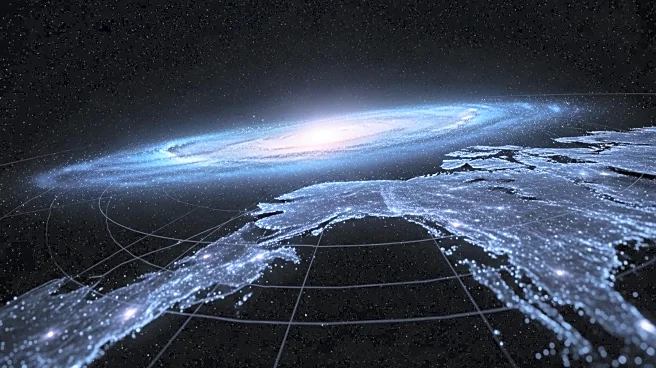What's Happening?
The James Webb Space Telescope has captured a detailed image of Sagittarius B2, the most active star-forming region in the Milky Way. Located near the galactic center, this region is characterized by glowing dust heated by young stars and dense clouds where future stars will form. Webb's infrared instruments provide unprecedented detail, helping astronomers understand the mysteries of massive star formation and why Sagittarius B2 is more active than other areas in the galactic center.
Why It's Important?
The detailed observations from the Webb Telescope offer new insights into star formation processes, which are crucial for understanding the lifecycle of stars and the evolution of galaxies. By studying regions like Sagittarius B2, scientists can learn more about the conditions that lead to star formation and the factors that influence the birth of stars. This knowledge is essential for advancing astrophysical theories and models.
What's Next?
Astronomers plan to use the Webb Telescope's observations to further investigate the star formation processes in Sagittarius B2. This could lead to new discoveries about the dynamics of star nurseries and the factors that contribute to their activity levels. Continued research may also help solve the mystery of why Sagittarius B2 produces a disproportionate number of new stars compared to other regions.
Beyond the Headlines
The study of star formation in regions like Sagittarius B2 can have broader implications for understanding the universe's history and the formation of complex structures like galaxies. It also highlights the capabilities of the James Webb Space Telescope in advancing our knowledge of cosmic phenomena.

